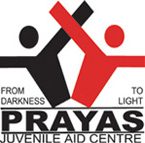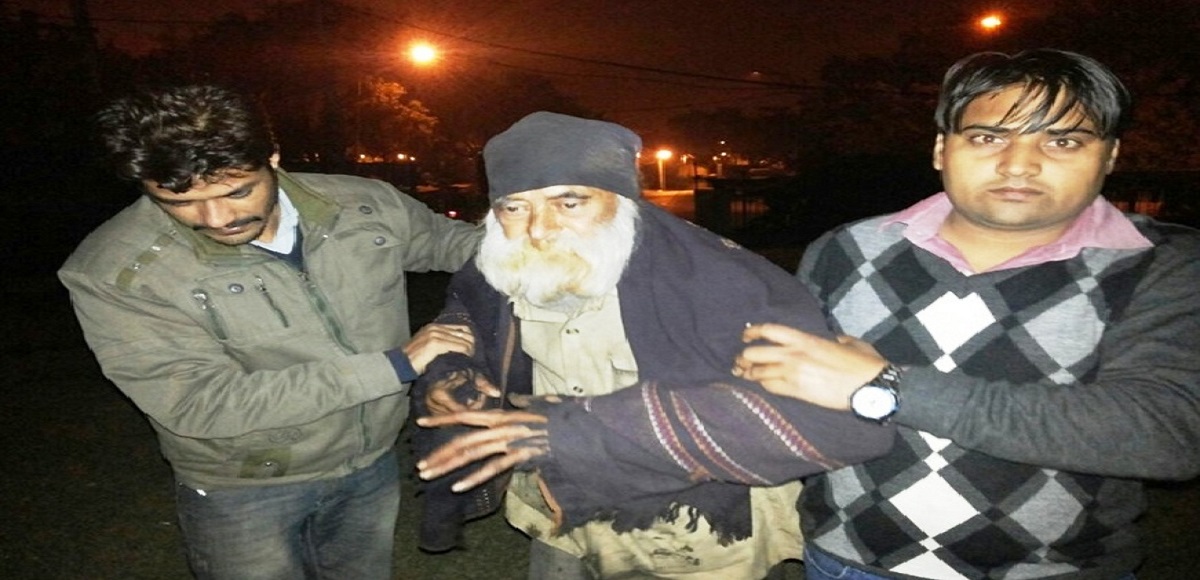Prayas Homeless Centres
Prayas Homeless Project : North & East Delhi The family of 55 year- old Mukesh had given up on him for the last two years. His wife had enough of his abuses and alcoholism and when in a fit of anger his two sons threw him out of his house in the summer of 2012 no one protested. Since then he was surviving by working as a coolie in the shops of Old Delhi. By December 2014 he had contracted TB when his luck changed when a team of volunteers from Prayas picked him up from a pavement opposite the Jama Masjid and put him in their night shelter in Jamuna Pushta. Today he lives with a song of hope on his lips. Sonu (32) with his emaciated looks and blank eyes looks 17 though his unkempt hair and white beard gives out his age. He was not always like this, but life after serving a three month jail term for a petty crime which he swears he did not commit changed everything. Today he cannot live without his daily dose of syringes for which he literally ready to beg borrow or steal. He is now an inmate of a night shelter run by Prayas at Kashmere Gate. The life for the ill-provided slum dwellers is bad enough, but for the homeless, it is extremely precarious who confront threat of starvation every day. They have to live under sub-human conditions, have to literally beg, borrow or steal to survive and suffer ill health with all possible ailments. Among such urban poor, the most defenseless are the women, children and the aged who, in any case, are entitled to special consideration. Mentally and physically challenged, the street sex workers and those suffering from ailments like leprosy, TB, STD and AIDS are among others in horrifying state. Even compared to them, the street children or destitutes must be considered to be among the most vulnerable. Homeless people surveyed in Delhi were predominantly male adult migrants from rural areas who had left their homes due to economic compulsions—lack of economic opportunities and poverty. Several became homeless, especially children and women, after being compelled to leave their home by familial conflicts. The homeless population forms an integral part of the metropolitan labour force. Their lack or very low level of formal education means they are mainly employed as unskilled, casual and temporary workers. Mohalla Clinic at Dandi Park The Mohalla or Community Clinic was inaugurated at Dandi Park and Sarai Kale Khan on December 2016 aimed to provide basic health services to underserved population in urban settings within walking distance (around 2-3 kilometre) of providing basic OPD facilities everyday for minimum 4-5 hours coupled with the availability of medicines and basic diagnostic test. Services available at ‘Mohalla Clinic’-An assured package of health services includes outpatient consultations, basic first aid and services, maternal and child health services including immunization, antenatal and post natal services, family planning, counseling and referral to next level of facilities for specialized treatment. Specialist and Referral Services and Continuum of Care: The services of pediatrician, gynecologist, and ophthalmologists been made available on weekly basis Vocational Training for Homeless People Delhi Urban Shelter Improvement Board (DUSIB) along with the Prayas JAC Society initiated vocational training program in October 2016 on pilot phase to empower the Homeless People living in the shelters at the Dandi Park. It enrolled 250 Homeless People and training on trades such as Electrical and Plumbing was provided to them. The Technical Support was provided by the Directorate of Technical Education, GNCT Delhi under ‘TECOS-(Technical Education Community Outreach Scheme) aimed to provide technical training to the poor and needy segments of the populations. The Objective was to support models of training and technical education for service delivery through local communities, in a manner which increases access to service and support for community participation. Free Food for Homeless People Deputy Chief Minister Manish Sisodia and Delhi Urban Development Minister Satyendar Jain launched the initiative of providing three meals per day by serving food to the needy at the Dandi Park shelter in north Delhi on December 16, 2016. Hasrad Ali, a labourer from Muradabad while watching news on television at Delhi Gate night shelter said, “Blankets, bed, tea, snacks, are being provided here free of cost. I do not have any word to thank these people. Earlier, I had to spend `100 for tea and food but now I can save it as we are provided here.??? Vishnu Sharma, who hails from Bihar and earns his livelihood by working as a daily wager, said he came here six month ago in search of job. He spent three nights on the pavement. One day he came to know about a night shelter at Dandi Park. He visited there same day and he is still living there with all comfort. “I was surprised after being served food. I earn `300 per day and with these facilities here I could save more and sent it back to my home. I am very thankful to the government for all this,??? he added. “I have been promised a job. I will earn some money and then go home for a while. My parents force me to study and I don’t like it. I prefer it here,??? said Manohar, who is sharing the shelter with 100-odd people. While the lucky ones get cots, others have to make do with sleeping on the floor, he said. Although mostly helpless people prefer to stay at night shelter but people like Mohan Ram, who is at the shelters by choice, are rare. Relationship between Health and Homelessness This relationship is a two-way street: experiencing poverty and/or homelessness can contribute to health issues, while health issues can contribute to poverty and homelessness. People experiencing homelessness are susceptible to the same issues as people, who are not, but their living conditions tend to make treating and coping with issues much more difficult. The New Delhi edition of an English broadsheet carried in its inside pages the story of Laxmi, who on July 26, 2010, gave birth to a girl on a dirty roadside, without any assistance from the government, hospitals or the capital‘s citizens. It recounted how the wailing of the newborn lying beside her dazed mother alerted a food-stall owner, who alerted a woman who ran a garment shop nearby. The shop owner, the story read, was shocked to see dogs circling the day-old infant. The dogs looked like they would pounce on the infant,‘‖ it read. The mother told me she had given birth on her own, even pulling the child forcefully to cut the umbilical cord. Almost all homeless people typically suffer major health problems, not surprisingly because they are forced to sleep rough, exposed to extremes of the seasons, and with virtually no access to clean drinking water, sanitation and home-cooked food. Their health burdens were reported by the Health Initiative Group for the Homeless based on a survey of 2,955 homeless respondents: ―A high proportion of homeless people were suffering from serious respiratory ailments including tuberculosis, acute and chronic infections, skin diseases and diarrhoeal diseases and severe mental illness like schizophrenia and other psychoses‖. Health issues may be also the reason for homelessness in the first place, including mental illness, mental retardation and stigmatizing illnesses that precipitate homelessness. Homeless individuals with alcohol and drug problems tend to be undernourished and debilitated and as a result have compromised immune systems. High percentages of them are infected with the Human Immunodeficiency Syndrome (HIV) or have acquired Immunodeficiency Syndrome (AIDS). Not surprisingly, morbidity and mortality rates among homeless people with alcohol and other drugs problems are high. Whether alcohol and or other drugs use is antecedent to, or consequences of homelessness, it exacerbates the problems of homelessness. Barriers to Providing Health Care to the Homeless * In addition to barriers to health faced by the Homeless, providers face numerous obstacles to providing health care to the homeless. * Population Mobility, presenting challenges in continuity of care and follow up. * Low prioritization of medical needs * Inability or difficulty for the homeless to keep medications with them due to lack of storage, refrigeration or fear of victimization * Challenges in establishing trust with patient, especially if the patient suffers from mental health conditionPrayas ImpactReal Impact, Measurable Results
270
fundraising & donation campaign
89
of beneficiaries have increased coping skills
93
of beneficiaries saw an increased income or educational level
83
increased community needs
It’s not just a donation, it’s an
investment in a children’s future…
Support by volunteering
Become a Volunteer
